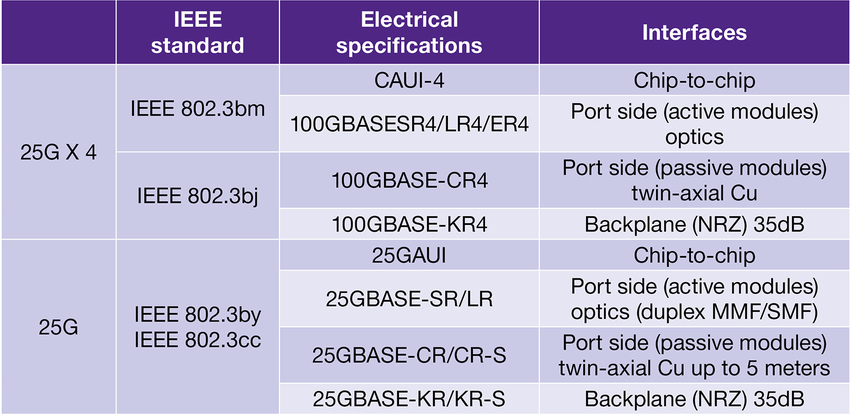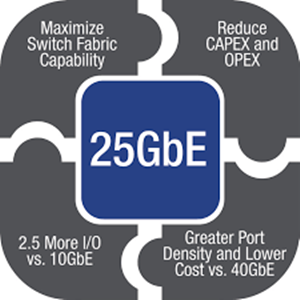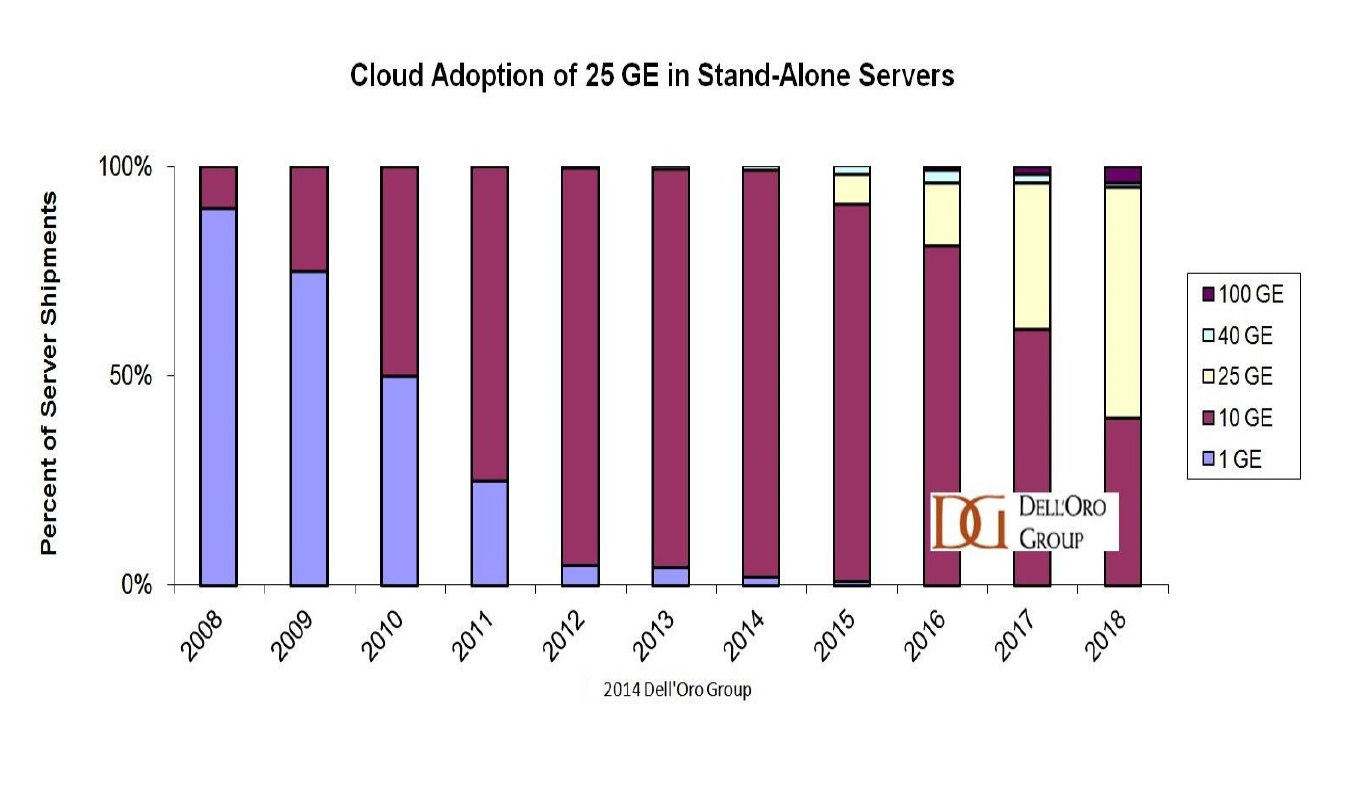How Far Can 25G Ethernet Go?
Seeing from the evolution of data transmission speed and size of data centers, it is not difficult to find that the pressure on the data centers to manage data quality and transmission speed continues to grow, which leads to the need for faster data transmission over the network. Ethernet industry has laid a path to higher networking speeds like 100GbE, and 25G Ethernet has been developed to provide a simpler path to future Ethernet speeds of 50 Gbps, 100 Gbps and beyond. The release of the 25GbE specification provides cost-effective solution for server-to-switch connectivity. However, network will not stop the pace of development. How far can 25G Ethernet go? This article is going to focus on the question.
25G Ethernet is a standard for Ethernet connectivity in a datacenter environment, developed by IEEE 802.3 task force P802.3by. The IEEE 802.3by standard uses technology defined for 100 Gigabit Ethernet implemented as four 25 Gbps lanes (IEEE 802.3bj). In 2016, 25G Ethernet equipment was available on the market, such as 25G SFP28 transceiver and DAC cable. In addition, 25G Ethernet supports for 100G using QSFP ports that can be converted to 4 lanes of 25 Gbps, like 100G QSFP28 transceiver. Here is a table of 25G Ethernet specification for you.

For 10G ToR to 10G Server connectivity, the simplest cabling solution is to use two 10G SFP+ transceivers and one fiber optic cable. When the network has to be upgraded to 25G Ethernet, the data center manager only needs to replace 10G SFP+ transceivers with 25G SFP28 transceivers. In the same way, we know that in 40G ToR to 10G Server connectivity, one 40G QSFP+ transceiver, four 10G SFP+ transceivers and one MTP to LC breakout cable are utilized. When this network deployment is upgraded to 100G ToR to 25G Server connectivity, the work can be quickly finished by replacing 40G QSFP+ transceiver with 100G QSFP28 transceiver, four 10G SFP+ transceivers with four 25G SFP28 transceivers. It can be easily found that there are some advantages when upgrading from 10G to 25G or 40G to 100G:
- It can offer both CapEx and OpEx savings through backward compatibility, for investment protection and seamless migrations with consistent rack-design and reuse of the existing cabling infrastructure, avoiding costly and complex changes.
- The technology utilized in 100G to 25G connectivity is similar to that in 40G to 10G connectivity, but the performance is increased by 2.5 times, thus reducing the power and cost per gigabit significantly.
- 25G Ethernet provides higher port and system density than a comparable 40G solution.
- Both power savings and higher density results in lower cooling requirements and operational expenditure for data center operators.

Considering the significant benefits and compelling economics of 25G Ethernet, it is no surprise that the move to 25GbE is accelerating—a recent five-year forecast by industry analysts at the Dell’Oro Group predicts 25G Ethernet will be the dominant Server port speed for new systems by 2018. You can learn about it from the following figure.

However, never underestimate the need for industry consensus building. At present, 25GbE is mainly used for switch-to-server applications. If it can realize switch-to-switch application, 25G Ethernet may go further.
To be frank, 25G Ethernet indeed gains ground in some aspects compared to 10G and 40G Ethernet. If you plan to deploy 25GbE network, you can visit FS.COM which provides quality 25G SFP28 transceiver and various fiber optic cables.
Originally published at: http://www.fiber-optical-networking.com/how-far-can-25g-ethernet-go.html
